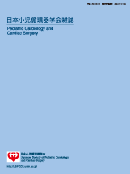Volume 29, Issue 1
Displaying 1-8 of 8 articles from this issue
- |<
- <
- 1
- >
- >|
Editorial
-
2013 Volume 29 Issue 1 Pages 1-2
Published: 2013
Released on J-STAGE: February 20, 2013
Download PDF (600K)
Reviews
-
2013 Volume 29 Issue 1 Pages 3-10
Published: 2013
Released on J-STAGE: February 20, 2013
Download PDF (991K) -
2013 Volume 29 Issue 1 Pages 11-16
Published: 2013
Released on J-STAGE: February 20, 2013
Download PDF (816K) -
2013 Volume 29 Issue 1 Pages 17-26
Published: 2013
Released on J-STAGE: February 20, 2013
Download PDF (1063K)
Originals
-
2013 Volume 29 Issue 1 Pages 27-33
Published: 2013
Released on J-STAGE: February 20, 2013
Download PDF (3066K) -
2013 Volume 29 Issue 1 Pages 34-38
Published: 2013
Released on J-STAGE: February 20, 2013
Download PDF (1315K)
Case Report
-
2013 Volume 29 Issue 1 Pages 43-48
Published: 2013
Released on J-STAGE: February 20, 2013
Download PDF (1051K)
Editorial Comment
-
2013 Volume 29 Issue 1 Pages 39-42
Published: 2013
Released on J-STAGE: February 20, 2013
Download PDF (681K)
- |<
- <
- 1
- >
- >|
